Policy Speech by the Governor of Tokyo, Koike Yuriko, at the Fourth Regular Session of the Tokyo Metropolitan Assembly, 2024
In opening the fourth regular session of the Tokyo Metropolitan Assembly in 2024, I wish to speak about my policy concerning future metropolitan administration.
Her Imperial Highness Princess Mikasa passed away on November 15th. We prayed for her recovery but are truly saddened that our prayers were not answered. On behalf of the citizens of Tokyo, I would like to express our sincere condolences.
1. Foreword
We are living in turbulent times, confronted by climate change, economic challenges, security concerns, and other pressing issues. And in the United States a new leader has been chosen to helm the next four years. Against this backdrop, last month I visited the cities of three countries. There, I felt the international community’s mixed sentiments of hope and apprehension for the future, but more than that, I was particularly struck by the power and vitality of cities that are now rapidly developing. I believe that we also are being called upon to dynamically resolve the mountain of issues confronting us and rise with unwavering determination to further heights.
Cities are a concentration of sophisticated functions. According to Professor Edward Glaeser of Harvard University, cities are the human species’ greatest inventions, with these cities, created by people, being the engines for innovation that led to the development of civilizations. It is precisely because our country is facing a difficult situation now that Tokyo must take the initiative to protect people's lives and livelihoods, and to protect and grow the economy. With a firm vision for the future based on broad perspectives and foresight, we will swiftly roll out initiatives that will drive Japan.
2. Making Tokyo a city where people shine even more
In any age, it is people who are the source of vitality. Only when they can choose the path they wish to take, can they live vibrantly and fully demonstrate their capabilities. We will make Tokyo a city where people can shine even more.
-
The empowerment of women is a longstanding issue in Japan and is where our country lags far behind the rest of the world. I believe that overcoming this situation and making our society more diverse and abundant hold the keys to a sustainable and bright future where both men and women can shine.
We will launch a major project called “Women in Action” or “WA,” taking the first letters of “Women” and “Action.” WA, which could mean “circle” or “harmony” in Japanese, aims to expand the circle of women’s empowerment across Japan, and to make society more harmonious by allowing both men and women to play active roles with no gender distinguishment. To lead by example, the Tokyo Metropolitan Government will begin providing our own employees with full support for a work-life balance. Specifically, we have decided to introduce systems from the next fiscal year that will enable more flexible workstyles, such as a four-day work week utilizing the flextime system, and a new partial leave to balance work and parenting. Up to now, people had to adapt to systems, but from now on, systems will adapt to people’s lifestyles. We will continue to flexibly rethink work styles at the TMG so that employees will not have to give up their careers due to major life events such as childbirth or parenting.
Regarding what needs to be done to initiate sweeping changes from Tokyo, while also hearing the views of experts, we will proceed to examine the enactment of an ordinance that will be a game changer for the empowerment of women in Japan.
-
It is also crucial to transform our society into one in which people who wish to have and raise children can feel confident about doing so. We will continue to push ahead the various programs we have been implementing for seamless support, including measures for daycare waiting lists, support for egg freezing, the Tokyo Mom and Dad Support Project, and 018 Support provided for children ages 0 to 18.
The Tokyo Metropolitan Otsuka Hospital aims to begin fertility treatment in the next fiscal year. Making the most of its strong track record in perinatal care and women's healthcare, the hospital will provide seamless support for pregnancy, delivery, and perinatal care. For concerns faced after childbirth such as loneliness and isolation, apart from the regular visits made to families raising children, next month we will launch “Gyutto Chat (Comforting Chat),” for casual consultations through social networking services. Through both real and virtual connections, we will provide parents with a greater sense of reassurance.
-
As the world competes in developing human resources, the educational needs of the Japanese are also changing. Diversity in learning is crucial for nurturing global capabilities in our children, who hold the future in their hands. We will review the true role of schools, including metropolitan high schools, and based on discussions with the Board of Education, we will formulate a new educational policy outline within this fiscal year.
We have also begun studies for the formulation of the next action plan for special needs education. We will deepen discussions on inclusive education, including collaboration and exchange between metropolitan high schools and special-needs schools, which is tailored to the developmental stage of each student, and also on how to best prepare special-needs education facilities, which are expected to continue being in short supply for some time to come.
Another important matter is to firmly reflect in society the cognitive flexibility of children and their opinions from perspectives that might be overlooked by adults. I was recently presented with the outcomes of a project in which junior high and high school students created and proposed their own policies, which were developed through their multi-faceted discussions conducted ten times over a period of five months. We will apply the real voices of our future generations in formulating policies and drive the realization of a “children first” society.
-
In view of the severe reality of the shrinking population, as Tokyo gathers many people and companies, it is vital for us to take the lead in expanding sustainable work styles throughout society.
An urgent challenge facing us is how to secure long-term care workers whose numbers are projected to fall short by around 570,000 in 2040. The TMG is implementing detailed measures such as introducing cutting-edge technologies and promoting digital transformation. Notably, regarding monthly housing support of up to 20,000 yen for long-term care personnel, we are receiving many appreciative comments from the worksite. In addition, last month, we conducted an intensive publicity campaign in cooperation with industry groups, using social networking services, digital billboards and other media for welfare professionals to explain why they took up this profession and its attraction. Through such efforts, we will work to secure and retain talent.
Work style reform in SMEs, which make up 99 percent of the companies in Tokyo, is also indispensable. We will continue supporting their shift to work styles of the future by not only registering companies that are actively striving for work style reform as “Tokyo sustainable work companies,” but also awarding those that are raising employee productivity through the utilization of technology.
The Tokyo Ordinance for Customer Harassment Prevention, the first of its kind in Japan, was passed at the previous regular session of this assembly. We have now prepared a draft of its guidelines to encourage proper usage at the workplace and ensure its effectiveness. In preparation for the ordinance entering into force next April, we will widely publicize the principles and concepts of the ordinance and have Tokyo become the model for a society where every working individual can fully demonstrate their abilities.
3. Promoting the creation of a safe and comfortable environment, which is essential for a bright future
Next, I would like to speak about building an environment that is safe, secure, and comfortable. We will work to make our city one that allows residents to lead their lives free of worry by promoting urban development that protects the lives and assets of the people, while at the same time maximizes the quality of life.
-
Following the Noto Peninsula Earthquake that occurred at the beginning of this year, fires rapidly spread in areas with close-set wooden houses, resulting in even more damage. Further enhancement of urban development for communities that do not burn and do not spread fire is needed here in Tokyo as well. At the start of next year, we will present a new draft of the Basic Policy for the Urban Development Plan for Disaster Resistance, which includes expanded support for measures to fireproof buildings and the development of parks equipped with disaster preparedness features, to accelerate the elimination of areas with close-set wooden structures.
The importance of preparations for increasingly intense storms and flooding caused by climate change, specifically, measures to protect against storm surges along rivers that run through low-lying areas, also continues to grow. This month, we will compile specific plans for each river, including the best methods for improvement, the timing for implementation of such measures, and other information into a draft outlining our policies for the improvement of storm surge measures along rivers, with the final version to be released within this fiscal year.
In addition, we have formulated a basic plan for the development of a new disaster management base in the Tama area capable of taking on the functions of the Tokyo Metropolitan Government in the event of a major disaster to play a key role in “protecting the capital.” To strengthen preparations for risks specific to the area, such as mountain rescues and landslides, we have newly established and launched the Tama Command Unit of the Tokyo Fire Department in Tachikawa. In this way, we will work to bolster the disaster response capabilities of the Tama area and raise the level of safety and security throughout Tokyo.
The series of robberies that have occurred across Japan carried out by people who applied for “yamibaito” (dark part-time jobs) represent an extremely malicious type of crime that not only ruins the lives of the victims but also the lives of the perpetrators. Amid the growing threat of these crimes spreading, we cannot afford to be complacent. In partnership with relevant organizations, we will further strengthen efforts aimed at raising awareness to prevent new people from becoming involved in these crimes and for promoting crime prevention in local communities. Additionally, we will study various measures to firmly protect the lives of the people of Tokyo and to keep everyday life here safe and secure.
-
Promotion of autonomous driving
Reduced bus service and discontinued local bus routes, the effects of an increasingly severe labor shortage, are becoming more apparent even in Tokyo. As a further decline in the workforce that keeps our society going is inevitable, we aim for the realization of a society where autonomous driving is integrated into daily life as a means of supporting logistics and public transportation. We will advance discussions with local municipalities to expand the promotion zone, which supports private business initiatives aimed at putting such technology into use, beyond the waterfront area. In areas promoting the introduction of autonomous driving buses, such as Nishi-Shinjuku, Suginami-ku, Tama-shi, and Mizuho-machi, we will also work to steadily step up efforts that will contribute to improved technical precision. At the same time, in order to secure more drivers to alleviate the shortage, we will promptly study multifaceted measures that take into account the situation of bus operators. The united efforts of the public and private sectors will firmly support this foundation of urban life.
Utilization of vacant homes
With creative thinking, the nearly 900,000 vacant homes in Tokyo can quickly be transformed into attractive community resources. In other words, they are full of potential. From this perspective, we will hold a seminar to connect owners of vacant homes with businesses looking to use such properties to create model examples of use. In the same way, we will also consider concrete measures for vacant homes in the Tama area and Tokyo Islands, including the possibility of utilizing these properties to promote relocation and settlement in these areas.
Measures for railway crossings and the installation of platform doors
Railway crossings that rarely open still exist in various parts of Tokyo, resulting in chronic traffic congestion and acting as barriers to urban development for a safe and secure city. We must further promote measures, centering on the railway grade separation projects that we have been steadily advancing. Last month, we started the process of revising the Basic Policy for Railway Crossing Measures, and we will further review its contents, taking into consideration matters such as the ongoing aging of society and increased awareness of disaster preparedness.
Additionally, we must also speed up installation of the platform doors that keep Tokyo railway users safe. We recently held the second meeting of a council that includes representatives of the central government and railway operators, for the sharing of information on the development of new platform door models that help cut costs and installation time, as well as the initiatives of railway operators. As the installation of this equipment is a complex process with financial, technical, and other challenges, we will advance studies to find ways to support railway operators while also receiving the cooperation of the central government. With this council as a platform, the public and private sectors will bring together their knowledge to accelerate installation of platform doors.
Enhancing the functions of the Port of Tokyo
The environment surrounding the Port of Tokyo, our city’s gateway to the sea, is rapidly changing. This includes the growing shortage of workers in the field of logistics and progress made in decarbonizing the global supply chain. To enable the port to continue playing its role as a major logistics hub well into the future, we will strategically upgrade the functions of the Port of Tokyo based on a vision for the port that firmly takes into account global trends and the future ahead.
-
We will make everyday life smarter and more convenient for the people of Tokyo. Next February, we aim to release a new application that will award Tokyo residents with points for taking part in various activities, such as those that aim at improving health, which can then be applied toward purchases or other purposes. With this as the first step, we will work to centralize the applications of the TMG bureaus in the future and transform this app into a “super application” that can be like a one-stop gateway to metropolitan government services.
We are also making progress in “Children’s DX.” Partnering with Itabashi-ku, Adachi-ku, and Chofu-shi and with the participation of as many as 126 daycare centers, we recently launched a one-stop service that enables parents and guardians to search for child daycare facilities, make reservations to tour daycare centers, and complete enrollment procedures online. In addition, the database for our push-type notification service, which takes the initiative in delivering information to those who need it, has been prepared in order to expand its availability throughout Tokyo. Through ongoing implementation of digital transformation (DX), we will create an environment that allows the people of Tokyo to experience a higher level of convenience.
To fully leverage the benefits of digital technology for the improvement of resident services, it is essential to take the digital transformation of the metropolitan government to the next level. While listening to the latest insights of a new panel of experts that we will establish, we will formulate a strategy for the broad use of AI. We will utilize the technological capabilities of GovTech Tokyo to create tools to improve work efficiency through the use of AI. We also hope to adopt “broad listening,” a method of making a range of opinions visible, in a variety of areas of metropolitan administration. The litmus test for our efforts will be our long-term vision for the 2050s “Shin-Tokyo 2050” (working name). Under the guidance of AI expert Anno Takahiro, we will work to reflect a wide range of opinions from Tokyo residents through broad listening.
4. Leading the way toward a sustainable future with cities at the helm
Next, I will talk about the Tokyo Metropolitan Government’s measures aimed at realizing a sustainable future. Actions to resolve societal issues must be initiated by cities, which are the stage where people play out their lives.
-
Symbolic of such actions is our response to the climate crisis. We are striving to turn Tokyo into a “power-generating future city” through initiatives such as adopting next-generation solar cells and mandating the installation of solar power generation systems in newly built homes and buildings. We hope our efforts will become a model for the world and create momentum to advance global decarbonization. With this vision in mind, at COP29 in Baku, Azerbaijan, I announced that Tokyo will aim to build gigawatt-class floating wind farms off the Izu islands in the Pacific Ocean, as well as advance a new initiative to have the outstanding green technologies of Tokyo-based companies contribute to the further decarbonization of the Global South.
It is said that if current climate policies are not improved, global temperatures will rise by as much as 3.1℃ by the end of this century, a reality that highlights the pressing need to accelerate climate action. We are advancing various endeavors, such as tests for Japan’s first installation of solar road panels on public roads; the use of geothermal and wind power on the Tokyo islands, which are renewable energy solutions that leverage the features of the islands; and the application of a new material developed by a startup that can lower temperatures without consuming energy. Additionally, this week, we will finally begin the world’s first trial trading of green hydrogen. Tokyo will take the lead in adopting technologies that will help resolve societal challenges, contributing to the realization of a carbon-neutral world.
-
Climate change is also severely impacting global biodiversity. We recently published an interim draft outlining our wildlife conservation policy, which includes seven strategies such as conserving ecosystems and promoting measures to address invasive species. This will be finalized within the fiscal year following a period of public comment to steer policies we will implement alongside various societal actors. Furthermore, we will harness Tokyo Green Biz, an initiative we are advancing through public-private collaboration, as a driving force to promote harmony between the natural environment and urban functions, and to encourage citizens to lead more eco-friendly lives.
We will also advance the building of systems aimed at realizing a circular economy that makes effective use of limited resources and minimizes negative environmental impacts. The safe and efficient collection of lithium-ion batteries, which are used in smartphones and many other small electronics, presents a major challenge. We recently ran a pilot project in collaboration with local governments in Tokyo and other organizations that sought to promote the wide-scale collection and recycling of these batteries. We will build on this initiative to further ensure the recycling of lithium-ion batteries, which are prevalent all around us.
-
To support initiatives aimed at promoting sustainability, it is also crucial to use the power of finance to generate inward flows of capital from both within Japan and abroad. Last fiscal year, we invested two billion yen to establish a fund for promoting the generation and storage of energy. This fund has attracted over six billion yen in private-sector funding, and we have begun investment activities with it. We will use this fund to drive further private-sector investment and accelerate the proliferation of grid-scale batteries, which are crucial for maximizing the use of renewable energy. Furthermore, this autumn, we selected businesses to operate our fund that aims to contribute to the transition to a circular economy and the conservation and restoration of biodiversity. We will steadily advance preparations for the establishment of this fund.
This fiscal year, we became the first local government in Japan to issue sustainability bonds in offshore markets. This led to the acquisition of a wide range of investment funding, mainly from Europe. Domestically, this month, we will begin issuing Tokyo Green and Blue Bonds to retail investors. These bonds were upgraded from the Tokyo Green Bonds to also cover projects related to marine environment conservation and other initiatives.
By continuing these kinds of concrete efforts, we will ensure that sustainable finance, which is also said to be infrastructure for a sustainable economy and world, takes root in society.
5. Creating new values to generate a positive growth cycle
The growth of Tokyo will attract vitality from around the world and stimulate even further growth. I am positive that feeling that their living conditions have improved will imbue people with confidence and hope. We will continue creating new values to drive this virtuous cycle.
-
History has repeatedly shown us that the introduction of new forms of mobility, from automobiles to airplanes, sparks innovation in the world. There is now fierce global competition to develop flying cars as a form of next-generation mobility, with this presenting another opportunity to change the future. We will refine our roadmap with the goal of beginning the commercial use of flying cars in built-up areas in 2030 and accelerate relevant initiatives through public-private partnership.
Startups are at the vanguard of driving innovation. We have begun calling for startups to participate in SusHi Tech Tokyo 2025, one of the largest startup conferences in Asia, which will be held in May of next year. To attract overseas investors to the event, we will organize special programs that will offer benefits such as matchmaking opportunities with Japan-based companies. We will also support and further upgrade the activities of ITAMAE, the team of young future leaders organizing many aspects of the event. By transforming SusHi Tech Tokyo into an even more global, future-oriented event, and by attracting talent and funding from across the world, we will drive the creation of new businesses.
-
We will harness the full potential of Tokyo’s unique charms, which have been shaped through the interweaving of the old and the new, to enhance the dynamism of our city.
Using traditions and innovative technologies to refine the appeal of Tokyo
Edo-period society, which continued for some 260 years, saw the establishment of a circular economy that was pioneering for its time, as well as the flourishing of a rich culture of food and the arts, which captivated the common people. In advance of the Edo-Tokyo Museum’s grand reopening, scheduled for spring 2026, we are running various events and projects that offer the opportunity to experience Edo culture. We will leverage the reborn museum as an asset to strongly promote the deep and unique appeal of Tokyo’s history and culture to the world under the EDO brand.
Present throughout Tokyo are public bathhouses constructed in the traditional shrine-architecture style, whose structures are replete with history and invite visitors into the nostalgic world of 20th-century Showa-era society. These bathhouses are said to be unique fixtures in Tokyo, as they were built with resplendent designs after the Great Kanto Earthquake to lift the spirits of the citizenry, who were striving to rebuild the city following the disaster. We will ensure this unique architectural style is passed down to future generations, while also studying ways to harness the opportunity presented by the heightened interest in public bath culture among youth and international visitors in recent years, to turn these bathhouses into a new charm that will attract many people.
After dusk, crowds gather at the Tomin Hiroba plaza outside the Tokyo Metropolitan Government Building and focus their gazes on a projection mapping show that has been certified by Guinness World Records as the largest permanent architectural projection-mapped display in the world. This year, we will once again hold a New Year’s Eve countdown event. We will ring in the new year with impressive displays that make use of the exterior of the Tokyo Metropolitan Government Building, and further enhance the nighttime appeal of the area through the synergy with the festive illuminations that began in the district last week.
Helping people shine with the power of sports
Two days ago, around 6,000 people cycled around the Tokyo waterfront area as part of the Rainbow Bridge Ride event, which was held for the third year in a row. We are continuing to organize various cycling events under the banner of GRAND CYCLE TOKYO. Last September, Tokyo became the first city in East Asia to be certified by the Union Cycliste Internationale (UCI) organization as a city implementing pioneering cycling-related measures. Additionally, THE ROAD RACE TOKYO TAMA has been recognized by the UCI as an official international cycling road race, serving as a reminder of how the legacy of the Tokyo 2020 Games is steadily taking root in society. With the World Athletics Championships and the Deaflympics less than one year away, we have started recruiting volunteers to support and generate excitement for each event. The medal design for the Deaflympics, which was selected based on children’s votes, is rooted in the concept of “Spreading Our Wings.” In line with this concept, we hope that many residents of Tokyo and Japan become involved with the competitions and join us in developing them.
-
We currently stand at a turning point in history, where our country is exposed to fierce international competition. We must strive to invigorate Tokyo, and all of Japan. It is the very duty of local governments to harness their region’s unique characteristics for local revitalization. We will promote initiatives of coexistence and mutual prosperity that allow Tokyo and other areas to support one another and grow together. For example, Tokyo Innovation Base, which recently celebrated its one-year anniversary, has established a strong presence as a node connecting startups from across Japan with investors and other players from around the world. We will work together with local governments across the country and ensure that they effectively harness the strengths of Tokyo, which is home to a high concentration of companies, to generate a positive national cycle of innovation and growth. Additionally, we will continue to advance measures aimed at stimulating demand and expanding the use of timber from across Japan, including timber sourced from the Tama area. Tokyo will continue to demonstrate its leadership as the capital of Japan, so that all of Japan can flourish together.
6. Closing remarks
I have spoken about the various measures that Tokyo is implementing with the determination to lead the way in demonstrating the vitality that is needed to forge a brighter future. In these uncertain times, cities around the world are rivaling each other to address challenges that cannot be solved by taking the same paths as before.
This year’s Tokyo Venture Technology Award grand prize was presented to a company that developed a kit for the early detection of cancer by focusing on microRNAs. MicroRNAs were a much talked about subject when their discoverers were awarded this year’s Nobel Prize. The company was also awarded a special prize for women empowerment, as its COO is a woman who had consistently led the development. A company that had won the grand prize in the past had enhanced its technology since then, and through industry-academia-government collaboration, has successfully developed a revolutionary 3D printer that is five times faster than conventional 3D printers. I hope we can draw out the passion and out-of-the-box ideas of such companies and people even more, as these are what drive the realization of a sustainable society.
We will transform Tokyo into a city that further supports the realization of each and everyone’s dreams and ideals, and deliver hope to our people that a bright future awaits them.
Including the matters to which I have already referred, a total of 36 bills, including 14 ordinances and 7 contracts, have been presented to this regular session of the Tokyo Metropolitan Assembly for deliberation among the Assembly members.
This concludes my speech to the Assembly. Thank you.
This article is also available in other languages.(日本語)

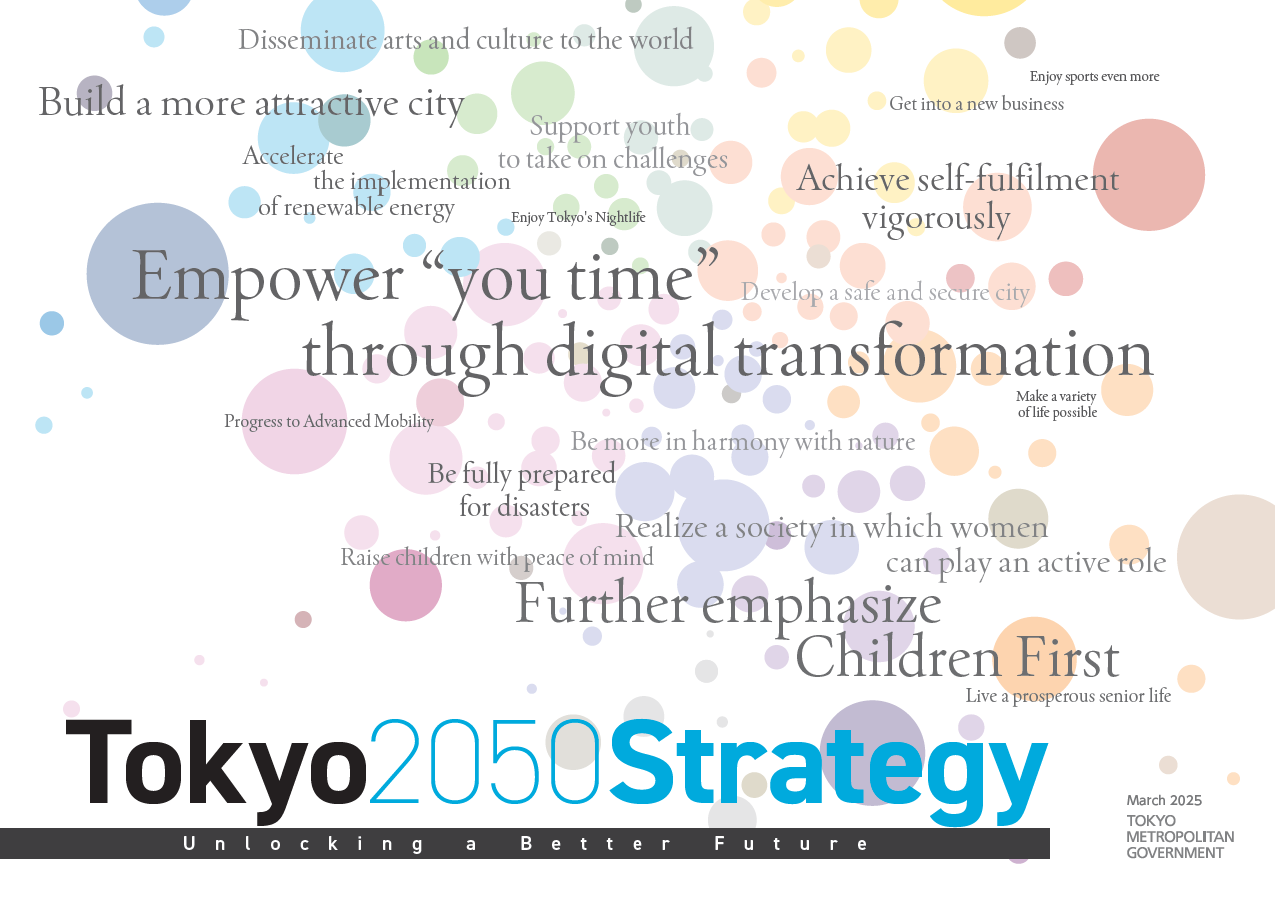
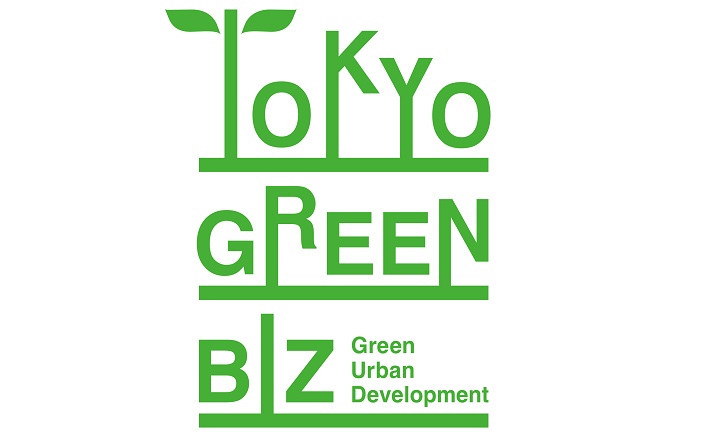

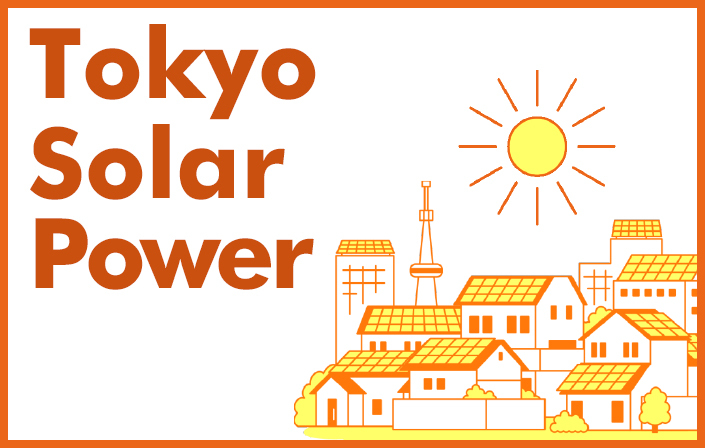
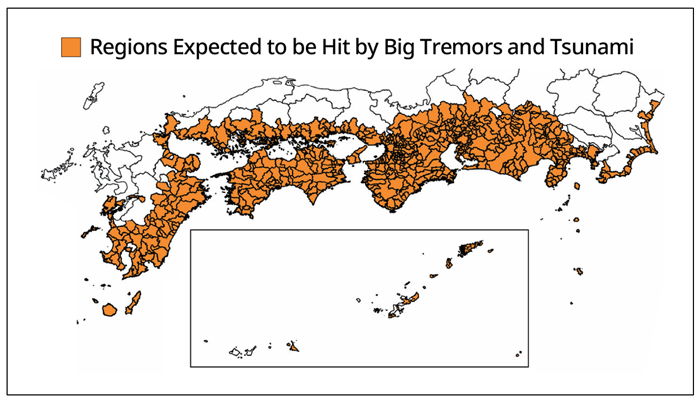
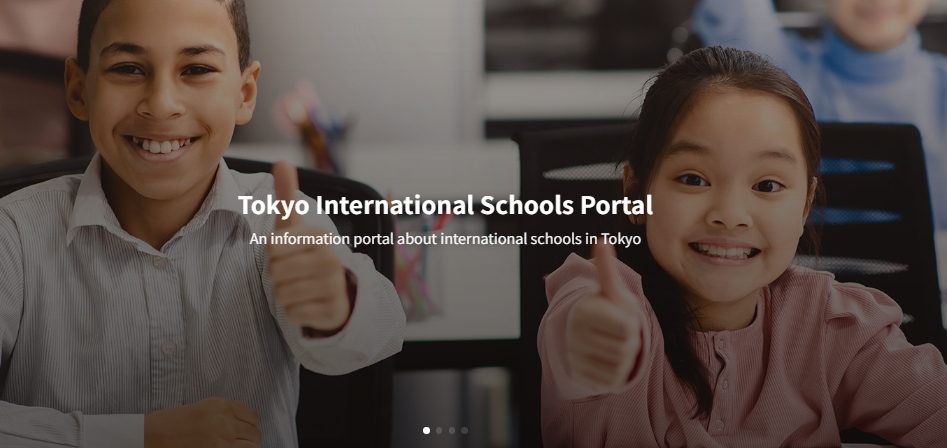
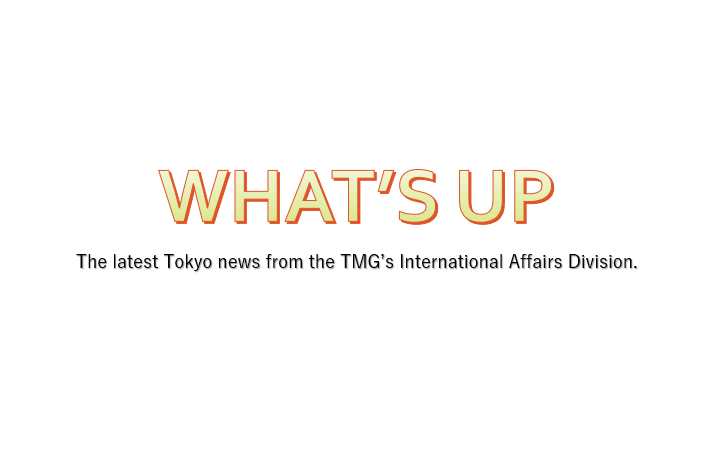
Recommended for You
Govenor Koike Calls for Innovation at FII PRIORITY Asia Summit 2025
December 1, 2025
Tokyo Governor’s Mideast Tour Highlights Multi-City Resilience Efforts and Japanese Capital’s Global Presence
November 27, 2025
Japan-U.S. Leadership Summit Held at UNU in Tokyo
October 10, 2025
TIME TO ACT FORUM 2025: Strategically Tackling Climate Change
October 7, 2025
Tokyo Governor Tours U.S., Urging Cities Worldwide to Fight Common Challenges Together
September 18, 2025
Tokyo 2025 Deaflympics (Part 1): A Leap Towards an ‘Inclusive Society’ with Sign Language
November 12, 2025
Championing Inclusive Growth: OECD and Tokyo’s Shared Vision
November 13, 2025
Governor Koike Inspects Hachijojima Island Hit by Typhoons
October 15, 2025
Tokyo Disaster Response Headquarters Meeting (2nd Session)
October 9, 2025
Selection of My Fave Umbrellas
September 25, 2025